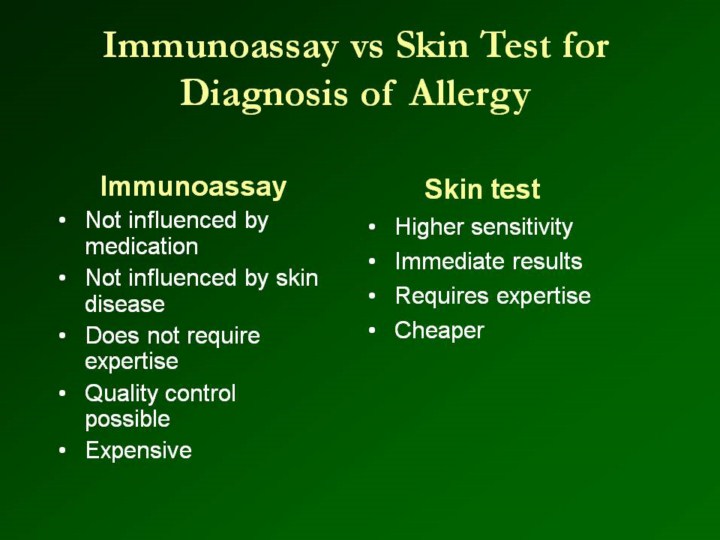| front |1 |2 |3 |4 |5 |6 |7 |8 |9 |10 |11 |12 |13 |14 |15 |16 |17 |18 |19 |20 |21 |22 |23 |24 |25 |26 |27 |28 |29 |30 |31 |32 |33 |34 |35 |36 |37 |38 |39 |40 |41 |42 |43 |44 |45 |review |
 |
Serum tests for allergy — Immunoassays to detect allergen-specific IgE antibodies in the serum have limited utility in the diagnosis of allergic rhinitis. (These tests are sometimes referred to as radioallergosorbent tests, or RASTs, because earlier methods utilized radioactive reagents. The methods currently in use are more correctly referred to as immunoassays for allergen-specific IgE). Skin testing — Carefully performed immediate hypersensitivity skin testing (prick skin tests) is a quick, relatively inexpensive, and safe way to identify the presence of allergen specific IgE. These tests are usually performed by allergy specialists. In sensitive patients, testing with selected diagnostic vaccines of tree, grass, or weed pollen, mold, house dust mite, and/or animal allergens results in a wheal and flare reaction at the skin test site within 20 minutes. Skin testing is particularly useful among patients with: An unclear diagnosis based upon the history and physical examination Poorly controlled symptoms, such as persistent nasal symptoms and/or an inadequate clinical response to nasal glucocorticoids Coexisting persistent asthma and/or recurrent sinusitis/otitis
|